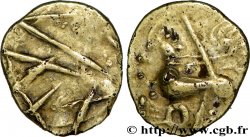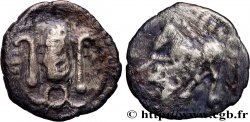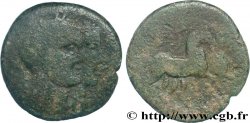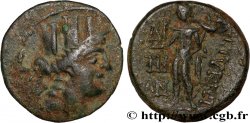Live auction - bga_372935 - GALLIA - CALETI (Area of Pays de Caux) Quart de statère d'or à l’aurige brandissant un torque et à l’oiseau - imitation tarentine
You must signin and be an approved bidder to bid, LOGIN TO BID. Accounts are subject to approval and the approval process takes place within 48 hours. Do not wait until the day a sale closes to register. Clicking on "BID" constitutes acceptance of the terms of use of cgb.fr private live auctions.
Bids must be placed in whole Euro amounts only. The sale will start closing at the time stated on the item description; any bids received at the site after the closing time will not be executed. Transmission times may vary and bids could be rejected if you wait until the last second. For further information check the Live auction FAQ
All winning bids are subject to a 18% buyer’s fee.
All winning bids are subject to a 18% buyer’s fee.
| Estimate : | 7 500 € |
| Price : | no bid |
| Maximum bid : | no bid |
| End of the sale : | 15 December 2015 14:54:44 |
Type : Quart de statère d'or à l’aurige brandissant un torque et à l’oiseau - imitation tarentine
Date: c. 80-50 AC.
Metal : gold
Diameter : 13,5 mm
Orientation dies : 1 h.
Weight : 2,03 g.
Rarity : R3
Coments on the condition:
Extraordinaire monnaie avec une vigueur de frappe et des types particulièrement complets. Profonde entaille portée au droit de laquelle résulte un léger écrasement du revers
Catalogue references :
Predigree :
Cet exemplaire provient d’une vente Dix Noonan Webb, Londres
Obverse
Obverse legend : ANÉPIGRAPHE.
Obverse description : Tête à droite, la chevelure très finement travaillée en rouleau et en trois spirales torsadées sur l’arrière ; un ornement d’oreille en trois globules ; le cou ornée d’un collier de perles et un ornement sous la base du cou .
Reverse
Reverse legend : LÉGENDE SIMULÉE À L’EXERGUE.
Reverse description : Cheval à gauche sur une double ligne d’exergue ; un aurige brandissant un torque, avec une fleur à quatre pétales au-dessus de la tête du cheval et un oiseau lui picore la tête ; un motif de pomme de pain entre les jambes du cheval.
Commentary
Les monnaies de cette série dite “à la tête diadémée” sont exceptionnellement rares. Mêmes coins de droit et de revers que le BN 8390 repris pour illustrer le Nouvel Atlas. Ce sont donc les deux seuls exemplaires connus sortant du coin A1 alors que le coin R1 a aussi servi à frapper le n° 23 du MAN.
Les poids de ces rares monnaies sont particulièrement lourds, ce qui confirme une datation haute. Les auteurs du Nouvel Atlas précisent néanmoins au sujet de cette série qu’aucune trouvaille en contexte ne permet de hasarder une datation précise. Rien ne permet de proposer une attribution particulière, mais il semble que le style du droit puisse être rapproché des Cénomans, avec le pendentif trilobé qui leur est propre, ou plus largement du Nord armoricain.
L’oiseau du revers et la composition en général semblent permettre de proposer un prototype à la série “au sanglier aurige” attribuée aux Calètes (DT. 98-99).
Cet exemplaire a subit une démonétisation volontaire dans l’antiquité, par un coup de burin sur le portrait. Cette pratique a longtemps été interprétée comme rituelle... sans que rien ne puisse le confirmer..
Les poids de ces rares monnaies sont particulièrement lourds, ce qui confirme une datation haute. Les auteurs du Nouvel Atlas précisent néanmoins au sujet de cette série qu’aucune trouvaille en contexte ne permet de hasarder une datation précise. Rien ne permet de proposer une attribution particulière, mais il semble que le style du droit puisse être rapproché des Cénomans, avec le pendentif trilobé qui leur est propre, ou plus largement du Nord armoricain.
L’oiseau du revers et la composition en général semblent permettre de proposer un prototype à la série “au sanglier aurige” attribuée aux Calètes (DT. 98-99).
Cet exemplaire a subit une démonétisation volontaire dans l’antiquité, par un coup de burin sur le portrait. Cette pratique a longtemps été interprétée comme rituelle... sans que rien ne puisse le confirmer..







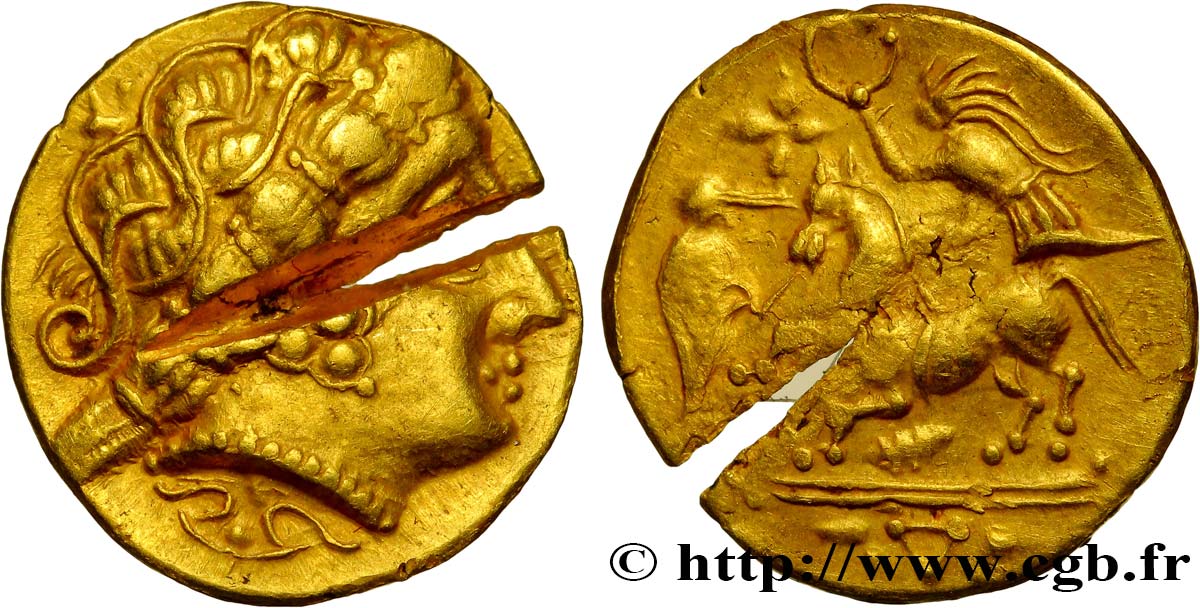
 Report a mistake
Report a mistake Print the page
Print the page Share my selection
Share my selection Ask a question
Ask a question Consign / sell
Consign / sell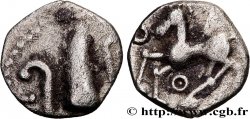
 Full data
Full data
